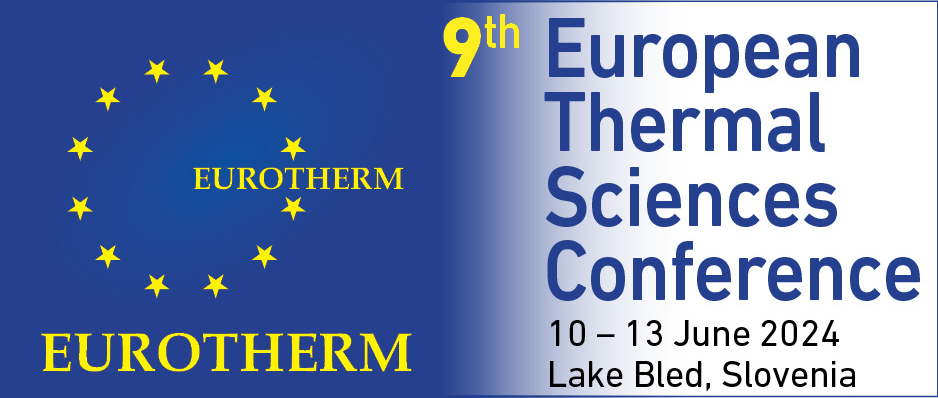The architecting of nanomaterials for water condensation applications
Dimos Poulikakos
In this lecture I will show that the combination of fundamental knowledge from phase change thermofluidics, surface wetting and rational surface nanofabrication, can lead to significant advances in condensation heat transfer, with a broad range of industrial applications, ranging from power generation to the chemical, food, and pharmaceutical industries. I will present examples of so designed surface architectures and I will explain the physics behind their performance of significant heat transfer enhancement. I will then focus on rationally designed nanostructured superhydrophobic surfaces and discuss the derived peculiar behavior of condensate droplets on such surfaces. When condensate microdroplets coalesce, they can spontaneously propel themselves omnidirectionally on the surface independent of gravity and grow by feeding from droplets they sweep along the way. I will explain the physics behind this “droplet roaming” phenomenon of coalescing condensate microdroplets on such designed, solely nanostructured superhydrophobic surfaces, where the droplets are orders of magnitude larger than the underlaying surface nanotexture. This phenomenon is then utilized to prevent condensate flooding of the surface, remarkably improving heat transfer.
Professor Dimos Poulikakos held the Chair of Thermodynamics at ETH Zurich from July 1st, 1996 until January 31st, 2024. He served as the Vice President of Research of ETH Zurich in the period 2005-2007. He was the ETH director of the IBM-ETH Binnig-Rohrer Nanotechnology center, (2008-2011). He served as the Head of the Mechanical and Process Engineering Department at ETH Zurich (2011-2014). He was the Chairperson of the Energy Science Center of ETH Zurich (2018-2021). He is a member of the Swiss National Academy of Engineering. He is currently the president of the division Programs of the Swiss National Science Foundation (SNF).
His research is in the area of interfacial transport phenomena, thermodynamics and related materials nanoengineering, with a broad range of related applications. The focus is on understanding the related physics, in particular at the micro- and nanoscales and employing this knowledge to the development of novel, disruptive technologies.
Among the awards and recognitions, he has received for his contributions are the White House/NSF Presidential Young Investigator Award in 1985, the Pi Tau Sigma Gold Medal in 1986, the Society of Automotive Engineers Ralph R. Teetor Award in 1986, the University of Illinois Scholar Award in 1986 and the Reviewer of the Year Award for the ASME Journal of Heat Transfer in 1995. He is the recipient of the 2000 James Harry Potter Gold Medal of the American Society of Mechanical Engineers.
He was a Russell S. Springer Professor of the Mechanical Engineering Department of the University of California at Berkeley (2003) and the Hawkins Memorial Lecturer of Purdue University in 2004. He received the Heat Transfer Memorial Award for Science in 2003 from ASME. In 2008 he was a visiting Fellow at Oxford University and a distinguished visitor at the University of Tokyo. He is the recipient of the 2009 Nusselt-Reynolds Prize of the World Assembly of Heat Transfer and Thermodynamics conferences. He is the 2012 recipient of the Max Jacob Award, for eminent scholarly achievement and distinguished leadership in the field of fluidics and heat transfer. He was presented with the Outstanding Engineering Alumnus Award of the University of Colorado in Boulder in 2012. He received the Dr.h.c. of the National Technical University of Athens in 2006.
His research is in the area of interfacial transport phenomena, thermodynamics and related materials nanoengineering, with a broad range of related applications. The focus is on understanding the related physics, in particular at the micro- and nanoscales and employing this knowledge to the development of novel, disruptive technologies.
Among the awards and recognitions, he has received for his contributions are the White House/NSF Presidential Young Investigator Award in 1985, the Pi Tau Sigma Gold Medal in 1986, the Society of Automotive Engineers Ralph R. Teetor Award in 1986, the University of Illinois Scholar Award in 1986 and the Reviewer of the Year Award for the ASME Journal of Heat Transfer in 1995. He is the recipient of the 2000 James Harry Potter Gold Medal of the American Society of Mechanical Engineers.
He was a Russell S. Springer Professor of the Mechanical Engineering Department of the University of California at Berkeley (2003) and the Hawkins Memorial Lecturer of Purdue University in 2004. He received the Heat Transfer Memorial Award for Science in 2003 from ASME. In 2008 he was a visiting Fellow at Oxford University and a distinguished visitor at the University of Tokyo. He is the recipient of the 2009 Nusselt-Reynolds Prize of the World Assembly of Heat Transfer and Thermodynamics conferences. He is the 2012 recipient of the Max Jacob Award, for eminent scholarly achievement and distinguished leadership in the field of fluidics and heat transfer. He was presented with the Outstanding Engineering Alumnus Award of the University of Colorado in Boulder in 2012. He received the Dr.h.c. of the National Technical University of Athens in 2006.

